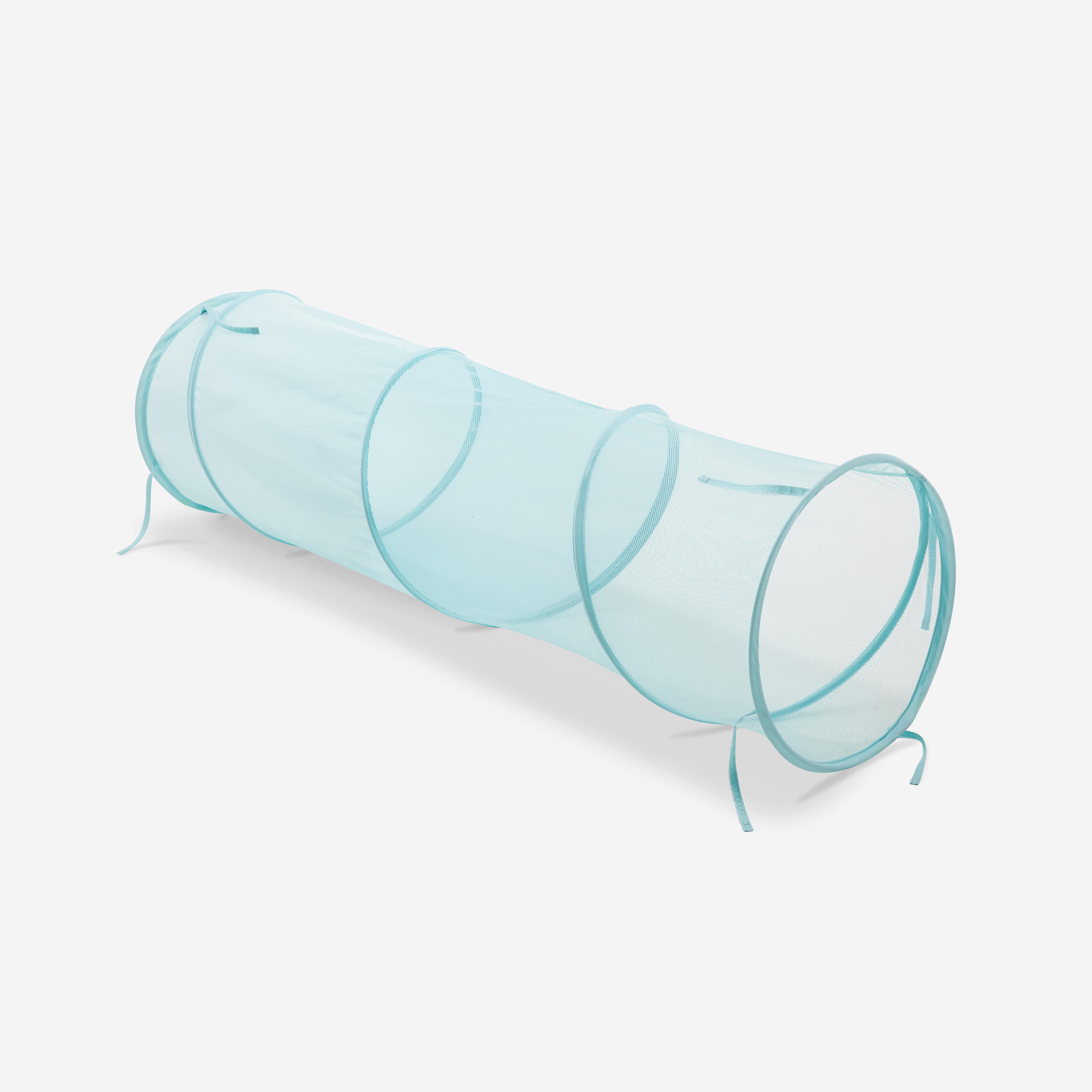






A versatile, adjustable tunnel for learning to crawl and creating obstacle courses that improve motor skills.Dimensions: Length: 1.5 m (4’9” feet) This tunnel is easily adaptable to children’s abilities and helps them overcome their fear!
[translation_pdp-materials]
Pole: 100.0% Steel, Main fabric: 100.0% Polyester
[translation_pdp-tests]
We often receive questions about the safety of these products for young children, especially regarding toxic substances. This product meets all legal and regulatory requirements as well as applicable standards for toys. Tests are periodically conducted by an external lab to ensure that the product does not contain elements that are harmful to the health of our youngest athletes.
Helps to develop motor skills
2 parts (perforated/dark) for gradual progress.
Adjustable
Ties to create turns or connect it to another tunnel.
Ease of use
Opens up and folds down easily.
Main stages of balance development
Before age 4, children learn to move their body by gradually moving forward with their feet side by side. At age 4, children can walk with one foot in front of the other on a beam that is one and half times the size of their feet. At age 6, children can walk heel to toe on a beam that is at least as wide as their feet.
Psychomotor development:
Children’s psychomotor development depends on a combination of genetics, motor skills, and maturity. A product can impact a child’s psychomotor development if it supports their motor skills. There are several aspects to motor skills: the body map, dynamic coordination, balance, hand-eye coordination, fine motor skills, time, and spatial awareness.
Body schema
The body map refers to a child’s perception of their body, which allows them to refine their movements and develop self-awareness. It develops based on sensations and actions before being represented and described. The more kids move, the more they refine their body map, and the more accurately they’re able to move.
Hand-eye coordination
Hand-eye coordination includes actions required for aiming with one or all parts of your body: for young children, this means following a trajectory, aiming first at large objects and targets with their hands and feet, then moving on to smaller and smaller objects and targets as they learn to control their fingers: for example, playing the piano, threading beads on a string, and writing.
Time and spatial awareness
Time and spatial awareness includes everything that involves a child’s perception of themselves in time (before/after, rhythmic activity, day/night, seasons, etc.) and space (in front/behind, on/under, right/left, etc.)
4.5/5
(4 )
[translation_statistics-rating-breakdown-title]
5 [translation_review-star]s
2
4 [translation_review-star]s
2
100% [translation_statistics-rating-breakdown-customers-recommend]
[translation_reviews-text-label-other-countries]
Sun, Feb 16, 2025
Tunnel motricité
eliana
: 4 to 6 months
: fr_FR
Très bon produit conforme à mes attentes. Les enfants adorent!
| Adjustable | 5 | |
| Ease of use | 5 |
Sat, Jan 04, 2025
Tunnel d'éveil
Fabienne
-
: 3 to 8 weeks
: fr_FR
Les enfants l'adorent
| Value for money | 4 | |
| Adjustable | 4 | |
| Ease of use | 5 |
Fri, Dec 13, 2024
Génial
Chantal
-
: 4 to 6 months
: fr_FR
Mon neveu s'éclate
| Value for money | 5 | |
| Adjustable | 5 | |
| Ease of use | 5 |
Sun, May 26, 2024
Rigolo mais pas stable
Manue
: 3 to 8 weeks
: fr_FR
Le tube plaît beaucoup à bébé qui ne se tient pas debout tout seul. Le tube est très long et en " ressort " donc il faut quelqu'un pour le tenir à chaque bout afin que le tube soit table quand bébé le traverse. Sinon bébé tombe dans le tube qui tourne tout seul. Mais rigolo
:)
...